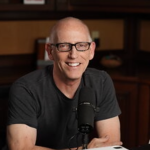
So, Mr Bob Dylan, you’re turning 80 – as a nasally younger man sang 55 years ago, ‘how does it fe-eeee-l?’
As usual, Dylan’s fans are unlikely to get a straight answer to that question.
For a wordsmith whose life and work has been dissected, critiqued and honoured for 60 years, it’s a near certainty that Monday’s milestone will prompt much comment from the entertainment world and precisely none from the man himself.
Last June’s surprise release of Dylan’s 39th studio album Rough and Rowdy Ways gave some clues as to how the Grammy, Oscar and Nobel prize winner was spending lockdown in his Malibu mansion, but don’t expect him to rock up to any of the birthday parties and concerts held in his honour this weekend.
Like the 1960s civil rights protest rallies that Dylan stopped attending after abandoning the folk music scene, it’s probably best to think of this 80th birthday as a moment inspired by, but not really involving, the man himself.
So, in that spirit, perhaps it’s just best to ponder those moments when Dylan reminded us to put time out of mind.
1940-50s – Moving on for his brush with fame
There are not many humans who could imagine growing up in a world where your childhood bathroom sink becomes an expensive collectible.
But that was the fate of Robert Allen Zimmerman, who was was born May 24, 1941, in Duluth, Minnesota, raised in nearby Hibbing and bar mitzvahed in 1954.
Hibbing is this weekend launching an art installation project to commemorate Dylan’s backstory – with an empty bronze chair facing his old High School as an open invitation for students to “carry on the tradition”.
There’ll also be festivities outside Dylan’s old childhood home, which was bought by Dylan memorabilia collector Bill Pagel, who has spent the past two years searching for contemporary fittings.
One of those objects was the sink where Dylan once brushed his teeth. It was sold by a local restaurant on eBay for more than $4000.
Young Bob likely dreamed of emulating Elvis and Little Richard over that sink before moving on to New York, where he re-imagined himself and his backstory, throwing in carnival clowns and hobos.
“There was really nothing there,” he once recalled of his hometown. “I didn’t run away from it. I just turned my back on it.”
1960s-70s – The motorcycle transfiguration
The 1960s were Dylan’s decade – in the first five years as a New York sensation and voice of the civil rights protest movement, then as a drug-fuelled rock’n’roller and ultimately husband and father.
He famously left behind the folk music scene, singing in My Back Pages “I was so much older then, I’m younger than that now”.
But in the maelstrom of fame, change and self-discovery, it was Dylan’s mysterious 1966 motorcycle accident that stood out as his next big change of life as he withdrew from public life only to emerge years later as a different artist.
In 2012 the singer bizarrely bought into his own myth-making when he told Rolling Stone magazine about the 1961 road death of a Hells Angel who shared his birth name – claiming that ‘transfiguration’ could explain his own renewal after his accident.
“So when you ask some of your questions, you’re asking them to a person who’s long dead,” Dylan told interviewer Mikal Gilmore. “You’re asking them to a person that doesn’t exist.
“People make that mistake about me all the time. I’ve lived through a lot … Transfiguration is what allows you to crawl out from under the chaos and fly above it. That’s how I can still do what I do and write the songs I sing and just keep on moving.”
Given Dylan wrote the legendary song All Along the Watchtower while recuperating, it’s possibly hard to argue against the intercession of a Hells Angel.
1980s-90s – Jesus, resurrections and Sinatra’s 80th
In the late 1970s Dylan again emerged from crisis after a drug habit and messy divorce led to his much derided ‘Alimony Tour’ which designed to pay for it all.
A seemingly endless need to reinvent himself resulted in a detour into Bible-bashing Christianity, where he once told a restless audience that if they wanted to hear rock’n’roll they should go to see Kiss and “rock’n’roll all the way down to the pit”.
But within a few years Jesus was out and Judaism was back, with Dylan appearing on New York Jewish telethons and other community events. In 1983 he released Neighbourhood Bully, a scathing defence of Israel’s place in the Middle East.
After another secret marriage that lasted just four years, by the late 1980s Dylan’s muse had been an infrequent visitor, with a series of poorly received albums culminating in a bizarre performance at the 1991 Grammys when he received a lifetime achievement award and hammed it up with Jack Nicholson.
Dylan swayed around like a drunken sailor before offering the view that “it’s possible to become so defiled in this world that your own father and mother will abandon you, and if that happens, God will always believe in your own ability to mend your own ways”.
By 1995 he appeared to have taken his own advice and found yet another way to explain life’s mysteries.
At Frank Sinatra’s 80th anniversary celebrations, Dylan showed a renewed willingness to re-engage with his folk music roots – offering up one of his own songs on ageing, ‘Restless Farewell’.
Coinciding with a near-death experience, his 1997 return to form with his Time Out of Mind album sparked a career song-writing renaissance that continues to this day.
2000-10s – Tom Waits’ investment advisor
Like most successful people his age, Dylan had little left to prove in the new millennium, but kept pushing the envelope anyway – hosting his successful Theme Time Radio program from 2006-2009 where he could indulge his taste for old tunes, obscure facts and bad puns.
One of the highlights was his cassette-recorded conversations with fellow gravel-voice Tom Waits on subjects as obscure as America’s last Passenger Pigeon and foot fetishes in China.
Dylan and Waits also reminded us about what growing old is really all about – swapping jars of home-made marmalade and investment advice.
In one exchange Waits says to Dylan: “Hey, Bob, thanks for the heads-up on that investment thing we were talking about. I really feel I dodged a bullet. I appreciate it.”
Dylan himself spent much of the last 20 years making canny investment decisions – turning his fondness for painting and metal sculpture into a lucrative artistic career and lending his name to his own ‘Heavens Door’ whiskey label.
2020 – It’s not dark yet
So once you’ve collected the Nobel prize for literature, secured $400 million for the rights to your back catalogue of 600 songs and put your feet up at Malibu while you wait out a global pandemic, what’s an octogenarian going to do next?
Dylan might know, but he’s not about to tell us.
The closest he has come to explaining his latest take on the human condition was in a 2019 interview with The New York Times where he said he did not contemplate his own mortality, but “the death of the human race”.
“The long strange trip of the naked ape. Not to be light on it, but everybody’s life is so transient,” Dylan mused.
“Every human being, no matter how strong or mighty, is frail when it comes to death. I think about it in general terms, not in a personal way.”
The post How does it feel? Pondering 80 years of growing older with Bob Dylan appeared first on The New Daily.
Powered by WPeMatico






